How to choose pool paint?
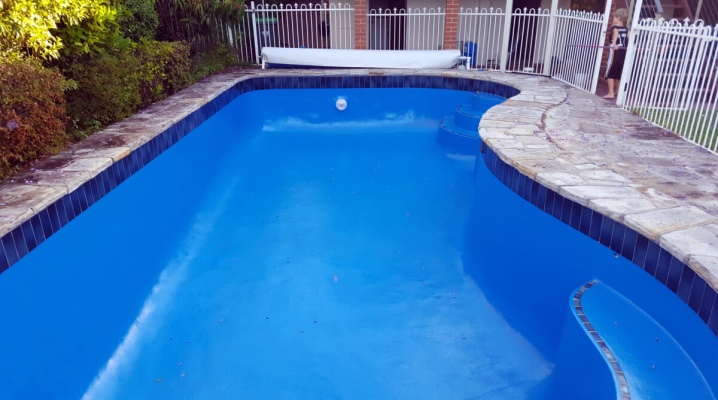
Beautiful and spacious pools become the real pride of the owners of summer cottages. But to make the tank look attractive, it is not enough just to install it. An additional stage of work is the finishing of the bowl. There are several materials to choose from, but paint is the most common. How to use it and what are the advantages of such a choice, we will consider below.
Peculiarities
If a few years ago only tiles were available for the owners of pools for finishing, now most people decide to buy paint. This is due to a number of advantages that this type of material has:
- paint is much cheaper than tiles, even the most expensive;
- ease of application: the tile should be installed by a person who understands this issue, and even a child will help paint;
- application will take place much faster than laying tiles;
- modern high-quality solutions contain substances that fight against the appearance of fungus, mold, lime;
- paints can be used for both metal and concrete pools;
- Durability: If applied correctly, the paint will last for years without the need for renewal.

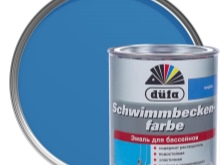
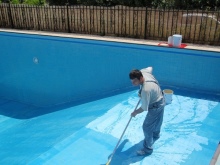
There are practically no drawbacks to this type of material. A certain disadvantage can be considered the fact that you need to carry out thorough preparation before staining. Also, some people feel that paint looks cheaper compared to refined tiles.
Views
Not every paint sold in hardware stores can be used to paint a tank bowl. You need to choose special compounds designed specifically for swimming pools. There are several such varieties.
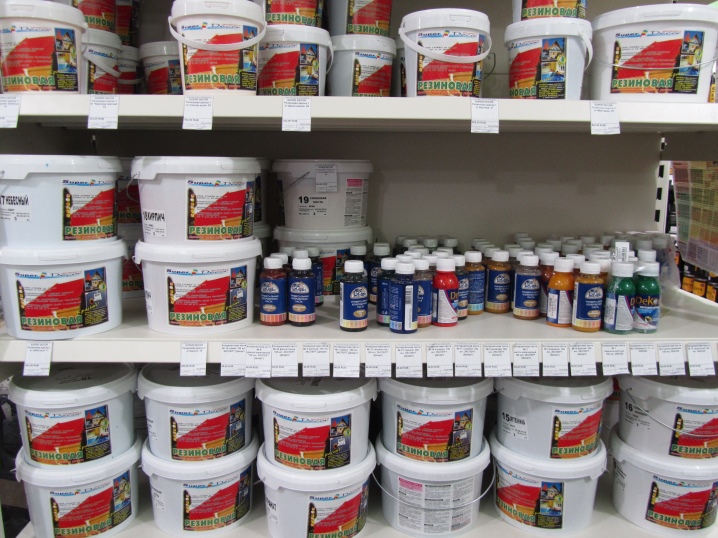
Polyurethane
This paint can be applied to concrete, metal and various types of stone. The polyurethane version is absolutely safe, does not emit harmful chemicals, the work can be carried out both indoors and outdoors. It is best to use a two-component paint, which will need to be mixed with a solvent. This will give a beautiful glossy shine.
However, it must be remembered that polyurethane dyes will highlight the slightest roughness, so the surface must be perfectly flat. You can fill the reservoir with liquid after 12 days.
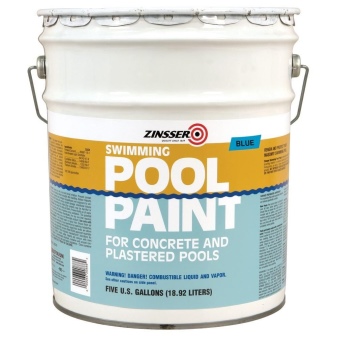
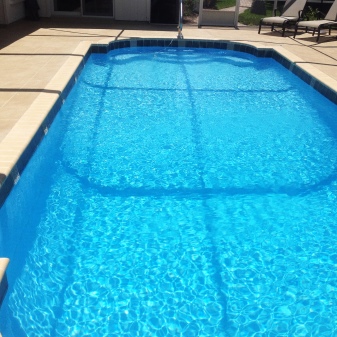
Chlorinated rubber
This type of paint is very highly appreciated by professionals, and many recommend choosing it. Most chlorinated rubber options are suitable for metal and concrete. They are perfectly applied, do not allow moisture to pass through, they are very wear-resistant - the staining will last for many years. It also prevents stains and mildew from forming. And chlorinated rubber dyes can be used even in salt water.
The downside will be fumes, so painting work should be carried out with gloves and a respirator, and if this is a room, then high-quality ventilation should be provided.
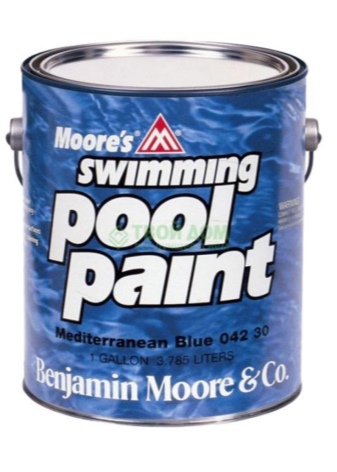
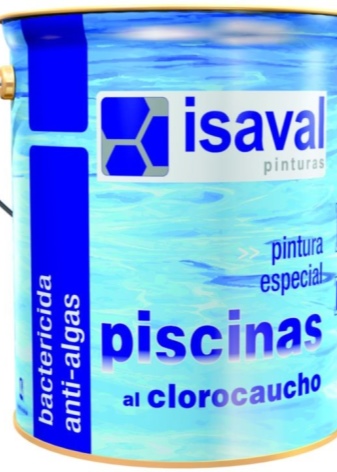
Epoxy
Epoxy paints contain resin and hardener. These colorants can be applied to a wide variety of materials. The paint is not rubbed off, the coating is durable and casts a glossy sheen.
The service life of the coating is at least 20 years, but it is important to observe the dyeing technology. Before applying paint, you need to prime the surface and wait about 8 hours. Otherwise, the paint may bubble and flake off.
In addition, it is also poisonous, which means that it is necessary to protect the mucous membranes and skin.
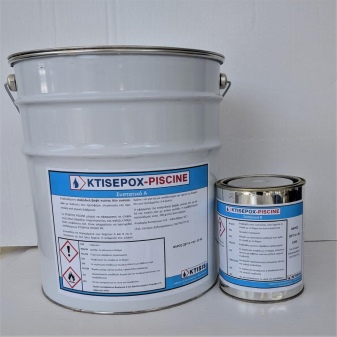
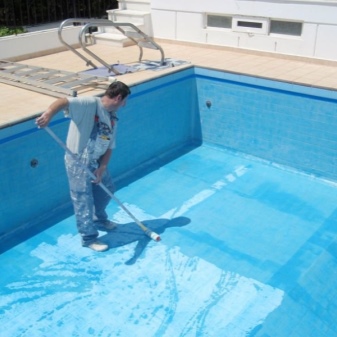
Acrylic
Acrylic paints are used in a wide variety of areas of construction and creativity, so it's no surprise that they began to be used for painting swimming pools. They can be applied to concrete, ceramics, metal and cement, and painting can be done both at normal and at subzero temperatures. The paint does not change the acidity of the water; it is even used for tanks in which fish live. Safe, does not emit harmful compounds. At the same time, acrylic does not resist shock well, and is also afraid of aggressive cleaning.
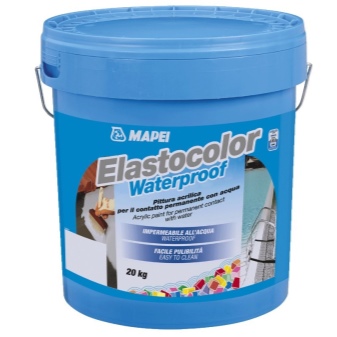

Hydrostone
Hydrostone, or PVC paint, is one of the best options for painting a pool inside. It is very economical - a maximum of 2 coats are required for the tank to look decent. When combined with the surface, the paint creates a coating that prevents the growth of mold and microbes. Thanks to this, the pool lasts much longer.
The paint does not emit an unpleasant odor, it is fireproof and resistant to salts, various chemicals and temperature extremes. However, it is important not to forget that such paint requires careful handling of the solvent.
If the rules are not followed, the coating will quickly deteriorate.
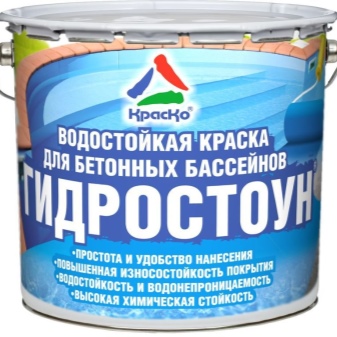
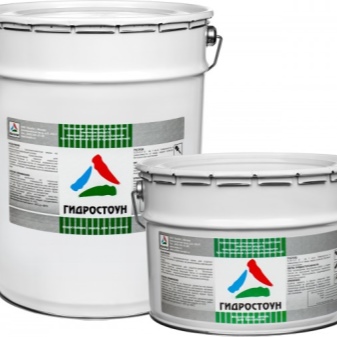
Manufacturers
There are not so many manufacturers of really high-quality pool paints. Let's take a look at several brands.
- Stancolac. This is a Greek company specializing in the production of paints and varnishes. Produces paints for all occasions: for home, ships, swimming pools, asphalt, wood and concrete, metals. Any paint for the pool will delight you with its quality, in addition, they are all anti-corrosion. You can also purchase a primer in the kit.
- Isaval. Spanish manufacturer that has received many positive reviews. The assortment includes paints for building facades, interiors, floors, as well as primer and preparatory materials. Pool paints are incredibly resistant to chemicals, corrosion, alkalis. They prevent fungal growth, are safe for health.
- Tutgum Dengal. This paint is from an Israeli manufacturer. Suitable for concrete pools, it is highly resistant to temperature extremes, chlorine. Available in 2 colors: light blue and blue. Can only be used for freshwater tanks.
- "Citadel"... This paint is produced by the company "LKM USSR". It is a rubber paint that has received good reviews from customers. The "Citadel" is quite durable, it will resist mold, wear, and the appearance of lime for many years. It is used for metal and concrete, it perfectly tolerates salt water.
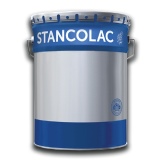
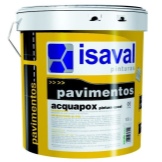
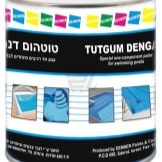
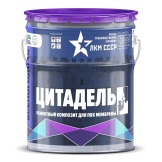
Selection Tips
When choosing paint for an outdoor pool, you need to be completely sure of its quality and that it is suitable for the material from which the tank is made. Be sure to look at the expiration date, since spoiled dyes can begin to bubble, flake off, they will not last even half of the promised period. In addition, it will not be superfluous to ask for a quality certificate.
When it comes to concrete pools, a hydrostone is the best choice. Such paint is required a little, it is applied in 1-2 layers and dries quickly. Chlorinated rubber and acrylic are also good options; polyurethane paint dries the longest. For metal and other types of pools, experts advise epoxy and acrylic solutions.
In terms of color, blue or blue is the best choice. These colors have a pleasant effect on the subconscious, making you believe that the water in the pool is actually bright blue. However, there are other options, such as white or green. Ideas like this are suitable for those who are not looking for standard solutions.
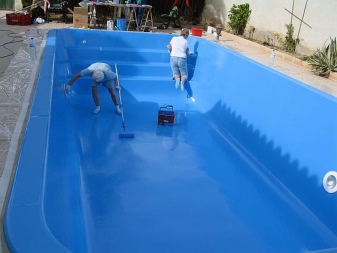

How to paint?
Depending on the type of paint, staining will be done in different ways. Here are some general recommendations.
- The first and mandatory step will be to clean the pool.The walls are treated with a metal scraper, then the bowl is cleaned and a 50% acid composition is applied to it. After that, the pool bowl is washed from a hose with plain water and completely dried.
- The next steps are degreasing and leveling. With the help of special tools, the bowl is degreased, washed and dried. Then the unevenness of the coating is eliminated. If the paint requires priming, then it must also be carried out.
- Choose a not too hot, dry day to paint your pool. If the composition gives off fumes, it is important to stock up on a respirator and protective clothing. The paint is mixed (and some are also diluted with a solvent, if indicated in the instructions), and then applied to the pool bowl. You should start from the middle, gradually going up. From the tools you can use a spray gun, roller, brush. It should be noted that the layers of paint should not be thick, otherwise drying will be delayed.
- When the drying time comes to an end, the pool fills with water and starts up.
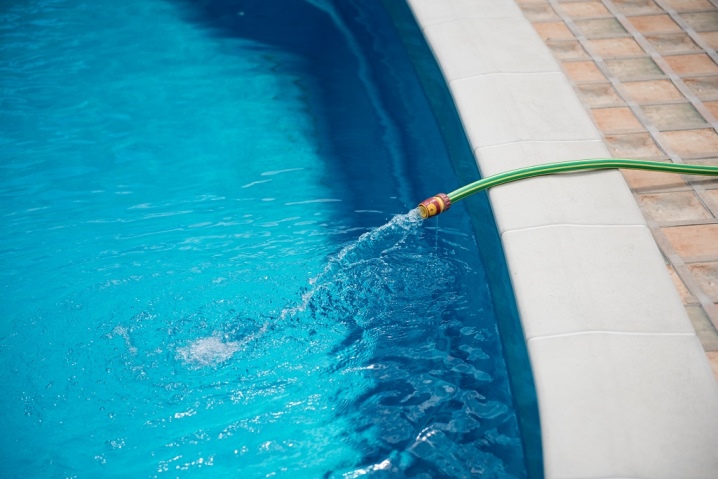
As you can see, coloring does not require huge material and physical costs. Waterproof paints are becoming an excellent alternative to other finishing methods, keeping up with their beauty. Choosing this option for yourself, you can be completely sure that the pool will be in perfect condition for at least 20 years.
Recommendations for choosing paint for the pool are given below.



































































The comment was sent successfully.